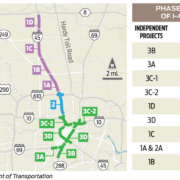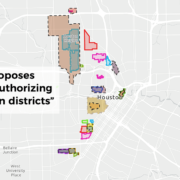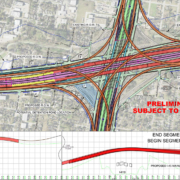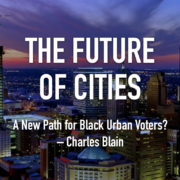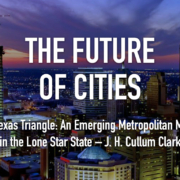Why METRO Should Eliminate Transit Fares
Apologies for the infrequency of posts – it’s been a busy holiday season. The big item this week is my mention in this Chronicle article for getting Metro to reconsider spending $100 million on new fare-collection equipment while they’re still looking at going completely fareless:
(Metro Chairman) Patman said she spoke with Tory Gattis, a local blogger who has argued for free transit as a way to boost use, on Wednesday after the Houston Chronicle reported on the agency’s plans to expand payment options. Gattis, she said, urged the board to give the contract more consideration in view of the fare study.
“I agree we need to think carefully about the connection between the two,” Patman said…
Gattis, in a Twitter post Wednesday, called spending that much to collect about $70 million each year “silly.”
“$100 (million) could buy and operate enough buses to handle the surge in demand from going fare-less with only a 6 percent revenue loss,” he wrote.
This is something I’ve discussed here before when I was supporting the Metro bond referendum, and Harris County Commissioner Radack supports it as well. Kansas City and others are also looking at going fareless to boost ridership. Both Forbes and Aaron Renn have written about the benefits of free transit fares. Here’s how I see the case for free fares:
Benefits of METRO going fareless
Affordable: Only 4.9% of Metro’s budget comes from the farebox ($67.5m from $1,363.8m revenue budget). That’s less than a couple years of normal sales tax growth.
Increased ridership:
- People are strongly attracted to “free” and discouraged by any cost
- Attract the occasional/discretionary rider (including tourists) who won’t go through the hassle of getting a Q card. From Forbes:
“This increased demand is not due solely to the availability of free and convenient transportation, but also to the fact that it is frictionless: people don’t have to worry about travel cards, cash or identification.”
- Columbus got a 2-3x increase in downtown ridership with free C-Pass program (from 5% to 10-14%)
- Estonia ridership increased by 10%
- Ridership declines 25-30% when fareless services start charging, so it makes sense that similar ridership increases would happen in reverse going from fares to free
Reduced congestion and increased air quality:
- Estonia reduced city center cars by 10%
- Especially large potential to attract new riders to Park-and-Ride services
Reduced drunk driving as more people choose transit to go out
Faster and more on-time trips from speeding the boarding process
- Also lower fuel consumption lost to excessive idling at stops
Stimulates the local economy and vibrancy: people will go out more and do more shopping, eating out, nightlife, entertainment, socializing, etc.
Reduced costs from not having to collect, process, and enforce fares
- Don’t have to purchase or service fare collection equipment (the $100 million mentioned above!)
Eliminates fare-based confrontations between drivers and riders (a larger problem than you might think)
Huge PR boost from being the first major city in America to go fareless
- Beat Kansas City, which is trying to go fareless in 2020 ($8m out of $105m budget, 7.6%)
From my understanding, it sounds like they could consider fareless off-peak right away, but would need a few years to add capacity to be able to handle the extra demand at peak hours. I’ve suggested a 5-year steady ratcheting down of fares (20% reduction per year) while adding incremental capacity where demand increases beyond existing capacity, which is especially likely on commuter routes. Going fareless off-peak in the near-term can also attract the discretionary rider to move their trip from peak to off-peak hours, freeing up additional peak capacity.
That’s the case for fareless. I’m looking forward to the results of Metro’s study and what they decide to do. I sincerely hope they look at going big and bold rather than playing it safe.
UPDATE: Bill King sent me an older Chronicle op-ed of his making similar arguments, but with more detailed analysis on the costs and benefits.
UPDATE 2: Kansas City beat us to it, but it shows it’s possible for a major city to go fareless and we could still be the first top-30 metro to do it. Hat tip to Chris.
UPDATE 3: CityLab: Why Kansas City’s Free Transit Experiment Matters.
UPDATE 4: A Kinder analysis of some of my arguments for Metro going fareless.
Tory Gattis is a Founding Senior Fellow with the Center for Opportunity Urbanism and co-authored the original study with noted urbanist Joel Kotkin and others, creating a city philosophy around upward social mobility for all citizens as an alternative to the popular smart growth, new urbanism, and creative class movements. He is also an editor of the Houston Strategies blog.
Photo credit:Roy Luck via Flickr under CC 2.0 License.

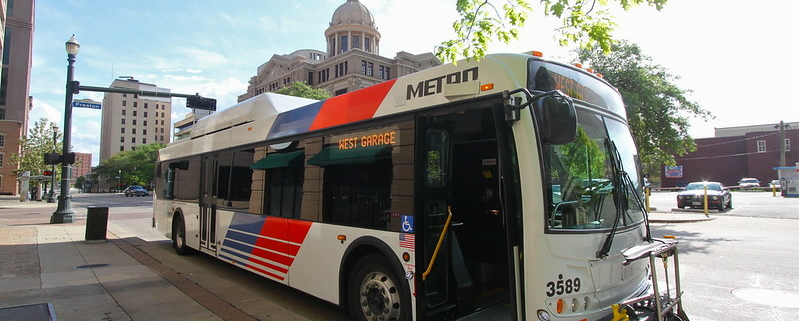 Roy Luck
Roy Luck
